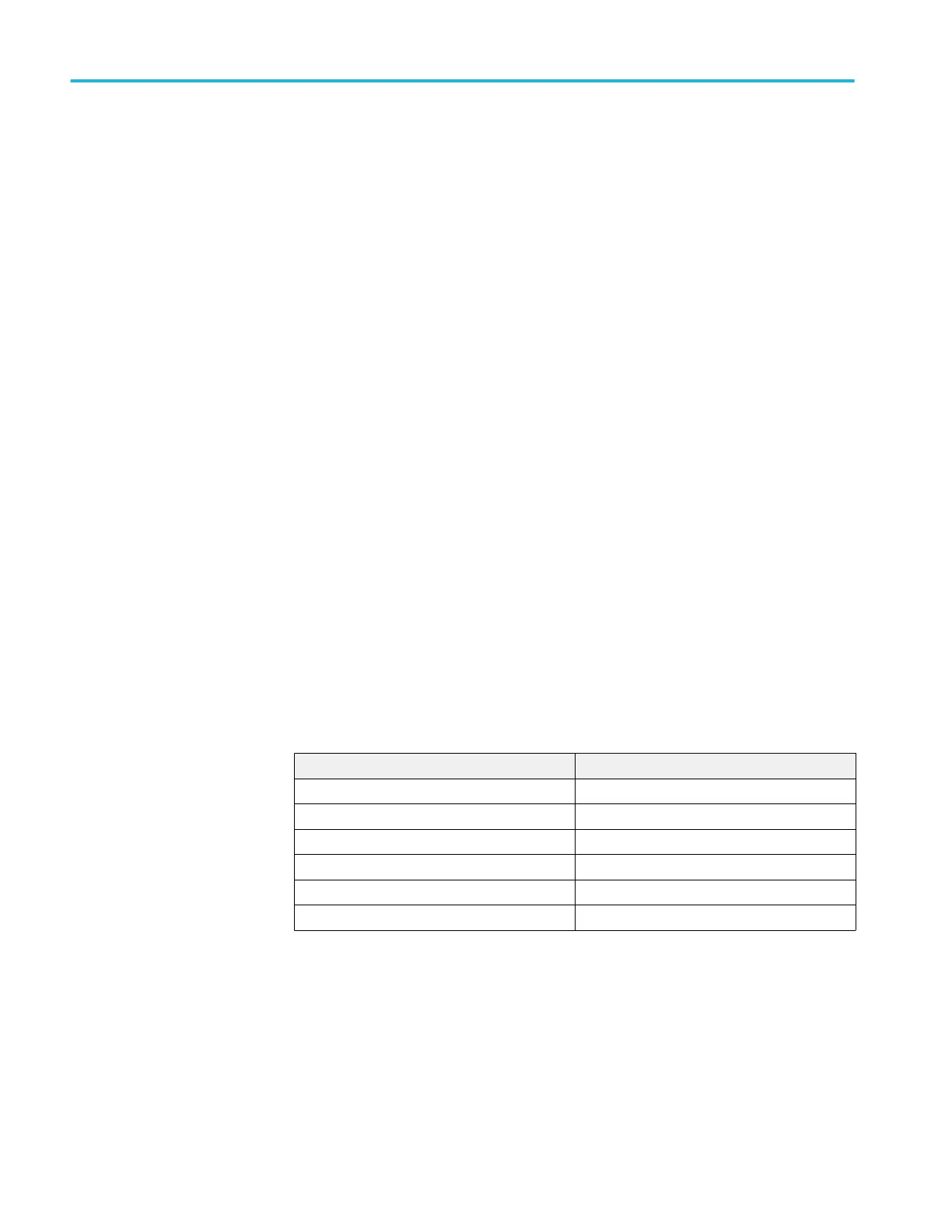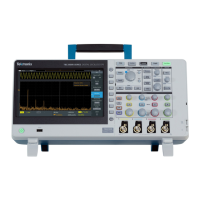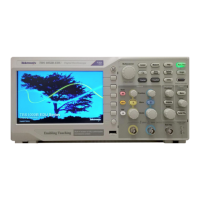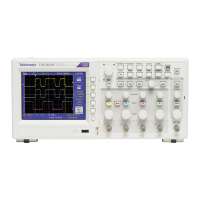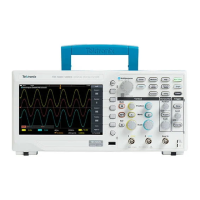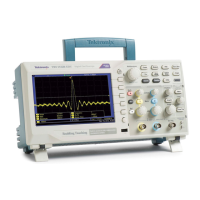FPAnel:TURN
Simulates the action of turning a specified front-panel control knob. No query
form.
When the front panel is locked, the front-panel button and multipurpose knob
operations are suspended. The FPAnel:PRESS and FPAnel:TURN commands
will also not work, and they will not generate an error. You can work around this
by using the appropriate programmatic interface commands, instead of the front-
panel commands. For example, to set the trigger level to 50%, you could use
TRIGger:A SETLevel. To force a trigger, you could use TRIGger FORCe.
Group
Miscellaneous
Syntax
FPAnel:TURN <knob>,[<n>]
Arguments
<knob> is the name of a rotating control. A comma (,) separates the control knob
argument from the numeric optional rotation value argument. In the absence of
the numeric rotation value argument, the default is 1 (clockwise). You do not
need a white space between the arguments and the comma. <n> represents the
rotation direction and magnitude of rotation. Negative values represent a
counterclockwise knob rotation, and positive values represent a clockwise
rotation. The magnitude of <n> specifies the amount of the turn, where <n> =
1 represents turning the knob one unit, <n> = 2 represents turning the knob two
units, <n> = 4 represents turning the knob four units, and so on. The range of
units depends on which front panel knob is specified.
Table 27: FPAnel:TURN arguments
Argument Knob
GPKNOB Multipurpose knob
HORZPos Horizontal Position knob
HORZScale Horizontal Scale knob
TRIGLevel Trigger Level knob
VERTPOS<n> Vertical Position knob
VERTSCALE<n> Vertical Scale knob
Examples
FPANEL:TURN TRIGLEVEL,10 duplicates turning the front-panel Trigger
Level knob clockwise by 10 units.
F commands
138 TBS2000 Series Programmer

